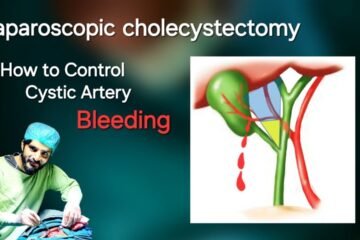Cholelithiasis is the medical term for the presence of gallstones in the gallbladder. Gallstones are hardened deposits of digestive fluid that can vary in size and composition. They can be as small as a grain of sand or as large as a golf ball.
While many people have gallstones without any problems, others may experience symptoms like pain, nausea, vomiting, or digestive issues. In some cases, gallstones can cause more serious issues, such as blockages in the gallbladder, bile ducts, or pancreas.

Types of Gallstones
Cholesterol Gallstones
These are the most frequent type and are mainly made up of hardened cholesterol.
Pigment Gallstones
These are smaller and darker, and are made up of bilirubin, a substance produced from the breakdown of red blood cells.
Causes and Risk Factors
- High Cholesterol Levels: Excess cholesterol in bile can lead to the formation of cholesterol gallstones.
- Obesity: Being overweight increases the risk of developing gallstones.
- Rapid Weight Loss: Rapid weight loss can prompt the liver to release additional cholesterol into the bile.
- Certain Medical Conditions: Diabetes, liver disease, and certain blood disorders can contribute to gallstone formation.
- Genetics: Family history can play a role in the likelihood of developing gallstones.
Symptoms
- Many individuals with gallstones have no symptoms and are referred to as having “silent” gallstones.
- When symptoms do occur, they may include pain in the upper right abdomen, nausea, vomiting, and digestive issues.
Diagnosis
- Gallstones are often found incidentally during imaging tests like abdominal ultrasound, CT scan, or MRI, performed for other reasons.
- If symptoms are present, further tests may be needed to determine the extent and treatment options.
Treatment
Asymptomatic Gallstones
If gallstones aren’t causing symptoms, they might not require treatment.
Symptomatic Gallstones
Treatment options include medications to dissolve the stones, or surgical removal of the gallbladder (cholecystectomy), which is the most common approach for symptomatic cases. The Gold standard surgery is laparoscopic cholecystectomy.
Who Needs Gallbladder Surgery?
Gallbladder surgery is usually suggested when gallstones lead to problems or have a high risk of causing issues. It’s also the choice if the stones are too big to handle with other treatments. The decision to have surgery depends on the size and location of the gallstones, as well as whether or not they are causing symptoms.

When to Consider Gallbladder Surgery
Surgery is often needed if gallstones are causing severe symptoms or complications, such as pancreatitis (inflammation of the pancreas), jaundice (yellowing of the skin), or an infection.
It’s also usually recommended if the stones are large, as these are more likely to create problems. People over 40 are more likely to need surgery because gallstones can be more troublesome in older age.
Advantages of Laparoscopic Cholecystectomy over Traditional Open Surgery
Smaller Incisions
Laparoscopic cholecystectomy involves making a few small incisions (usually 0.5 to 1 cm each) in the abdomen rather than a large incision. This results in less scarring and a more aesthetically pleasing outcome.

Reduced Pain
Patients generally experience less postoperative pain than with open surgery. The smaller incisions lead to less trauma to the surrounding tissues and muscles.
Faster Recovery
The minimally invasive nature of the procedure generally leads to a quicker recovery time. Most patients can resume their normal activities within about a week, whereas recovery from open surgery typically takes several weeks.
Shorter Hospital Stay
Many patients are able to go home the same day as the surgery or after just one night in the hospital, whereas open surgery might require a longer hospital stay.
Lower Risk of Infection
The smaller incisions reduce the risk of wound infections and complications related to larger surgical wounds.
Less Postoperative Complications
Laparoscopic cholecystectomy has been associated with a lower risk of certain complications, such as wound dehiscence (wound opening) and hernias.
Better Cosmetic Results
The small incisions typically result in minimal scarring, which is often less noticeable than the larger scar from open surgery.

Quicker Return to Normal Activities
Patients often resume their regular activities, including work and exercise, sooner than with open surgery.
Less Impact on Daily Life
Due to the less invasive nature, there is usually a lower impact on daily activities and quality of life post-surgery.
Dr. Tayyab Recommendation
While laparoscopic cholecystectomy offers many benefits, it is important to discuss with your healthcare provider whether it is the right approach for your specific case. In some situations, open surgery may still be required due to factors such as the complexity of the case or anatomical considerations.
Prevention
- Keeping a healthy weight, eating a balanced diet, and exercising regularly can help lower the risk of developing gallstones.



